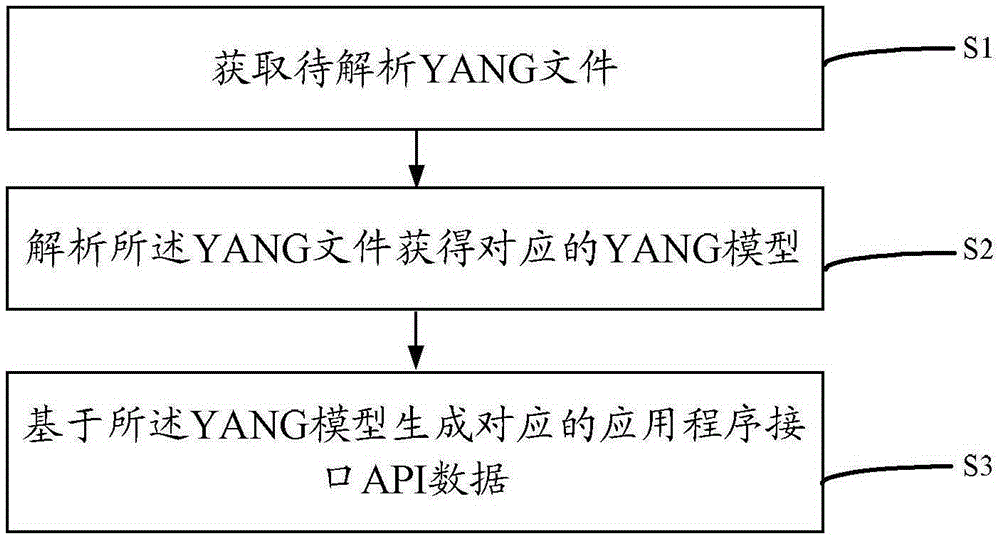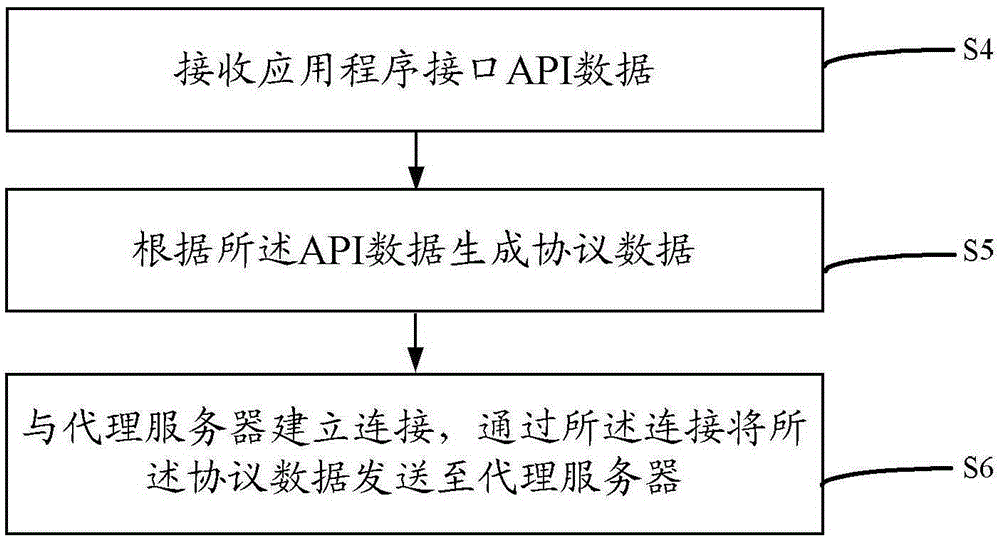Compiling method based on YANG model, and corresponding interface, module and system
A compilation method and application program interface technology, applied in components and systems, YANG model-based compilation, interface field, can solve the problem of inflexible configuration of network equipment, reduce the requirements of professional knowledge, reduce development and maintenance costs, and reduce steps Effect
- Summary
- Abstract
- Description
- Claims
- Application Information
AI Technical Summary
Problems solved by technology
Method used
Image
Examples
Embodiment 1
[0131] Flow chart such as Image 6 .
[0132] First, configure the configuration file, mainly including the full path of the directory where the source YANG file is stored, the full path of the directory where the generated code is stored, and the user can add the prefix name in front of the generated code, etc.
[0133]Second, parse the YANG file according to RFC6020, confirm the version number, correctness, and integrity of the YANG file (that is, in line with the dependencies with other YANG modules), and generate the corresponding YANG model.
[0134] Finally, according to the YANG mapping rules, the corresponding code is generated.
[0135] The following is an example of generating JAVA code based on the YANG file:
[0136] In the configuration file, including but not limited to the following:
[0137] yangSource=E:\\
[0138] codePath=D:\\
[0139] prefixName=com.zte
[0140] yangSource represents the full path of the directory where the source YANG file is stored....
Embodiment 2
[0175] like Figure 9 As shown, the user wants to configure the node data, taking NETCONF as the PLUG-IN component as an example:
[0176] Step 301 Initialization: read configuration file information, such as Agent device ID, IP address, port number, account password, etc.
[0177] Step 302 uses the service data class of the corresponding version to fill in the configuration information of the corresponding node information.
[0178] Step 303 calls the corresponding data access object class, and establishes a NETCONF connection to the Agent according to the information such as the ID, IP, and the like of the Agent.
[0179] Step 304 calls the Plug-in component (NETCONF component) to generate a NETCONF protocol message.
[0180] Step 305 sends the NETCONF protocol message generated in step 304 to the Agent according to the channel established in step 303.
[0181] Step 306 receives the result of the NETCONF message returned by the Agent; parses the result into a content part...
Embodiment 3
[0184] like Figure 9 As shown, the user wants to obtain node data, taking NETCONF as the PLUG-IN component as an example:
[0185] Step 401: System initialization: read configuration file information, such as Agent device ID, IP address, port number, account password, etc.
[0186] Step 402 uses the service data class to fill in the node information to be acquired.
[0187] Step 403 invokes the data access object class of the corresponding version, and establishes a NETCONF connection to the Agent according to the information such as the ID, IP, and the like of the Agent.
[0188] Step 404 invokes the Plug-in component (NETCONF component) to generate a NETCONF protocol message.
[0189] Step 405 sends the NETCONF protocol message generated in step 404 to the Agent according to the channel established in step 403.
[0190] Step 406 receives the result of the NETCONF message returned by the Agent; parses the result into a content part.
[0191] Step 407 encapsulates the ret...
PUM
 Login to View More
Login to View More Abstract
Description
Claims
Application Information
 Login to View More
Login to View More - R&D
- Intellectual Property
- Life Sciences
- Materials
- Tech Scout
- Unparalleled Data Quality
- Higher Quality Content
- 60% Fewer Hallucinations
Browse by: Latest US Patents, China's latest patents, Technical Efficacy Thesaurus, Application Domain, Technology Topic, Popular Technical Reports.
© 2025 PatSnap. All rights reserved.Legal|Privacy policy|Modern Slavery Act Transparency Statement|Sitemap|About US| Contact US: help@patsnap.com



